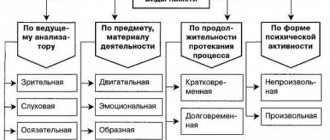Today, the most common form of psychotherapy is cognitive psychotherapy.
It is based on the assumption that the causes of human mental problems are erroneous thoughts. If they are detected and eliminated, then you can not only get rid of various mental disorders, but also prevent their occurrence in the future. Cognitive psychotherapy pays little attention to a person’s childhood memories, focusing on current problems, his inner world, thoughts, desires and fantasies. This is the main difference between this method of treating mental disorders and other popular types of psychotherapy: psychoanalysis and behavioral therapy.
The founder of cognitive therapy is Aaron Beck. Initially, he was engaged in psychoanalysis, but gradually became disillusioned with it and began to look for new methods of treating depression and affective disorders. Beck argued that the world around us is not bad, it is negative views of it that shape negative emotions and actions. Distortion of external circumstances in consciousness leads to the development of mental pathology, for example, depression.
Albert Ellis, the developer of the method of rational-emotive psychiatry, which has much in common with cognitive psychotherapy, worked independently of Beck. Today, cognitive therapy is a component of the cognitive-behavioral (behavioral) theory used by psychotherapists in their practice.
Fundamentals and objectives of cognitive behavioral psychotherapy
Cognition is a person’s ability to perceive and mentally process external events in accordance with their beliefs.
From childhood, a person acquires a number of rules and habits - both healthy and harmful, which interfere with life. Cognitive behavioral therapy is a branch of psychology based on the principle that thinking and behavior depend on a person’s habitual response. What does it mean? A certain person subconsciously reacts to external stimuli in a certain way that is unique to him.
How do we usually react to a disturbing event? We worry, are afraid, or feel unable to influence the situation. If you are under the influence of such negative emotions for a long time, this will inevitably lead to mental disorder. But you can give up such a “bad habit” by learning to perceive events differently in order to more easily cope with difficulties and avoid stress.
The main task of the CBT psychologist will be to teach the patient how to correctly work with his thoughts and a new attitude towards difficult situations that arise. This therapy is carried out in several stages and gradually forms life-affirming stereotypes of consciousness. Ultimately, the patient masters techniques aimed at reducing the level of anxiety and overcomes situations that frighten him without the usual panics and fears.
CBT will help:
- identify disturbing thoughts that contribute to the emergence of fears, depression, phobias, panic attacks;
- review your lifestyle and transform it into a healthy norm (for example, avoid overload, change your daily routine, get rid of bad habits);
- consolidate new thinking and correctly confront emerging negative situations in the future;
- overcome shame for your weaknesses and anxieties, learn to share problems with loved ones and gratefully use their support.
How to prepare for your first psychotherapy session?
It is always easier to start if the patient has previously determined the goals of therapy. Think:
- What goal are you pursuing, what would you like to change at work, in your personal life, in your relationships?
- What symptoms and bad habits do you want to eliminate?
- What useful habits and skills would you like to acquire?
At the first session, the psychotherapist will help you evaluate and clarify these goals and set priorities. Before the session, the therapist may ask you to take experimental psychological tests to assess your mood. The test results will help you and the therapist objectively evaluate your progress. Collaborative work then begins, which combines discussing and solving together the issues you put on the agenda and assessing the accuracy of your thoughts and beliefs about them. Subsequently, during psychotherapy, the patient learns new skills. At each session, we check together how you are feeling compared to previous weeks.
What are the benefits of CBT?
The most important advantage of using CBT is the sustainable long-term results. After undergoing cognitive behavioral psychotherapy, the patient is able to monitor, diagnose and treat complex conditions himself and becomes his own psychologist, so relapse is practically excluded.
In addition, CBT has a number of other advantages:
- high efficiency, proven by many clinical trials;
- short-term – usually about 10-15 consultations are required;
- provides a high-quality scientific basis, since the approach is based not only on psychology, but also on psychophysiology, neurobiology and other scientific movements;
- an action plan that is clear to the patient and therapist;
- pursues specific goals and solves specific problems that are discussed at the beginning of the sessions;
- recognized at the level of insurance companies, that is, the costs of CBT in some cases are covered through health insurance.
Fourth group: minimizing resistance
Techniques from this group are aimed at increasing the effectiveness of the treatment process.
- Purposeful repetition. In personal practice, you need to persistently and repeatedly repeat positive attitudes. For example, when a person overestimates his own thoughts during sessions, he needs to effectively reinforce this exercise. The problem will no longer seem as global as the patient previously thought.
- Reveal hidden motives for destructive behavior. If a person continues to act illogically and think negatively for a long time, then the specialist’s task is to identify hidden motives.
Why does a person continue to behave this way? Is he comfortable living in a “box of negativity”? What's behind this? Finding secondary gain is a difficult task for a psychotherapist.
Basic principles of CBT
What is the basis of cognitive behavioral psychotherapy?
The main principles of the new thinking will be:
- Your experiences are only your personal vision and personal assessment of a specific situation, and not the result of past experience.
- You can radically change your assessment of the event and thoughts associated with it.
- Your negative beliefs, although they seem plausible, are not the truth. And it is from these beliefs that you experience psychological discomfort.
- Your anxious experiences are a pattern of thinking to which you have become accustomed. You have the power to change your way of thinking and check for errors in your usual beliefs.
When will cognitive behavioral therapy help?
Cognitive behavioral therapy is successfully used by psychologists to overcome and correct in patients:
- anxiety disorders;
- schizophrenia;
- depressive states;
- types of addiction;
- eating disorders;
- phobias;
- obsessive-compulsive disorders;
- sleep disorders;
- antisocial behavior;
- psychosomatic diseases.
In addition, recently psychologists have proposed using CBT methods to help patients with chronic diseases. However, the effectiveness of this approach does not yet have strong evidence. But there is already a list of diseases for which CBT can successfully complement a medical treatment plan. These are bronchial asthma, hypertension, acute psychosis, irritable bowel syndrome, and unpleasant symptoms of menopause.
Summarizing the capabilities of the CBT technique, we can say that such therapy can be effectively used to correct psycho-emotional disorders and neurological disorders, and in some cases can become a good addition to the standard treatment regimen for chronic diseases. Therefore, knowledge of the CBT approach is recommended for those wishing to become a psychologist, practicing psychologists and psychotherapists of any direction, doctors and senior students of psychological and medical faculties. We offer everyone who is interested to take a distance learning course that will help them acquire the sought-after profession of psychologist or improve their existing knowledge.
Special techniques
To treat some severe mental disorders, special cognitive therapy techniques are used. They are combined with medications and other types of mental health care. In this way, it is possible to reduce the severity of the symptoms of the disorder and increase the effectiveness of the main treatment.
Among the special methods of cognitive psychotherapy, the most popular are the methods used to treat such pathologies:
- Obsessive-compulsive disorder. When correcting this disease, the “four steps” method, developed by American psychiatrist Jeffrey Schwartz, is used. The goal of this treatment method is to change or simplify obsessive thoughts and “rituals” procedures, as a result they are reduced to a minimum. The patient must become aware of his illness and learn to resist its manifestations. The therapist explains to the patient which of his fears are real and which are caused by the disease. They are clearly differentiated, and the patient is shown a model of behavior of a healthy person. Typically, people who represent authority for the patient are chosen as examples. Work in this direction is being carried out in stages, in four steps. This is why the cognitive treatment method for OBD received its name.
- Schizophrenia. This type of disorder is incurable, as it is associated with changes in the cerebral cortex. But the use of cognitive and behavioral therapy methods allows people suffering from schizophrenia to accept their illness and learn to smooth out its manifestations. If the patient constantly conducts conversations with otherworldly entities or imaginary images, then the psychotherapist helps him understand that the conversations are not with living people. Gradually, the person with schizophrenia realizes that his interlocutor is a figment of his imagination, as a result of which such conversations are given less importance. Over time, the patient recalls the imagined image from memory less and less often.
- Addictions. Alcoholism and drug addiction are also caused by a person's incorrect automatic thoughts. A feature of the cognitive approach to treating these disorders is that the therapist must first talk with the patient about his long-term plans and life priorities. After all, a person’s short-term goals should depend on this. First of all, he needs to explain that the main goal of any living being is survival. All animals and people enjoy things that promote procreation and survival, such as food, sex, etc. Processes that harm life cause negative sensations (hunger, cold or heat). All these sensations are transferred to actions or situations associated with them. But a person suffering from some type of pathological addiction has a new source of pleasure that was not provided for by nature. As a result, the patient becomes unnecessary natural joys, he sets himself the goal of obtaining pleasure through artificial means, which is harmful to his health and survival. The therapist must convince the drug addict or alcoholic that with a certain desire he can achieve the right goals, which will allow him to get rid of depression and a painful return to reality. It is possible to lift your mood in a natural way if you improve the quality of your own life, increase your self-esteem and “rise” in the eyes of others. Psychotherapists draw up a “wish map” for patients with addictions. This is a diagram that indicates the relationship of basic values necessary for survival with instincts and complex summary associations. This card, among other things, indicates exactly how addiction harms long-term plans and prevents you from fully enjoying life. Using this technique, you can save the patient from most harmful habits, for example, gluttony, gambling or Internet addiction.
The effectiveness of cognitive psychotherapy in the treatment of these severe mental disorders is quite high, as confirmed by numerous studies in this area. Cognitive and behavioral therapy can reduce the likelihood of relapse of the disease several times.
Methods and techniques of cognitive behavioral therapy
In their sessions, CBT psychologists, depending on the key problem, use a variety of techniques to help identify, analyze and correct a person’s anxious perception of the situation. Often a person is afraid in advance of what he has prophesied for himself; on a subconscious level he expects bad things. This is how panic begins. With the help of CBT techniques, a person changes his thinking and significantly reduces the effect of negativity on his psycho-emotional state.
Let's look at the main existing CBT techniques:
- One of the most common methods is Socratic dialogue
. The therapist asks the patient questions in such a way that he himself can find the source of his established rules. The specialist listens to the answers and draws the client’s attention to logical contradictions. Next, the arguments for and against are jointly discussed, the meaning and influence of thought on the psychological state is explored. As a result, the patient shows a willingness to reconsider his beliefs, comes to new conclusions and, accordingly, to new behavior. - Therapy according to the Beck method
. According to the founder of this method, individuals who are susceptible to negative emotions and suffer from low self-esteem more often suffer from neurotic conditions. Such people are aimed in advance at a bad outcome of any situation. For example, a boss makes a remark to an employee based on the results of the work performed, and the employee thinks: “Now I will definitely be fired, I won’t be able to find another job, I won’t have anything to feed my family,” as a result, despondency sets in. The Beck approach is a series of quick questions and answers to identify negative thoughts, during which an understanding of the problem and ways to relieve the dangerous state of depression comes.
- Ellis's Rational-Emotive Approach Technique.
REBT is a psychotherapeutic technique that effectively trains thinking skills and rational behavior. It is aimed at ridding the patient of rigid frameworks and established stereotypes in order to form a more flexible and positive worldview.
To summarize all of the above, it can be argued that cognitive behavioral psychotherapy provides a clear understanding of the origin of negative reactions and negative emotions of a person and offers specific routes to normalizing the emotional state. The CBT psychologist shows the client that nothing is impossible, and even in the most difficult situation you can enjoy life and control your fears.
Third group: activation of imagination
This group of techniques is aimed at activating the sphere of imagination. People with increased anxiety are dominated by obsessive, far-fetched thoughts and ideas that exhaust them from the inside. To overcome destructive thoughts, experts have developed a list of special techniques.
- Termination method. When a patient has a negative obsessive image, he should loudly and confidently shout the command “Enough!” Such a command stops the appearance of a negative image.
- Repeat method. If a person repeatedly repeats positive attitudes towards life, then his way of thinking becomes more productive.
- Using metaphors. Activating the realm of imagination requires the use of instructive parables, quotes and other metaphorical philosophical statements.
This epic approach to solving the problem is more understandable.








